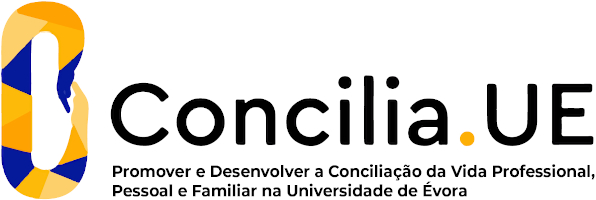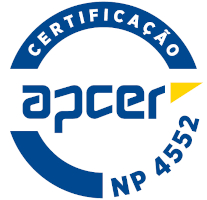2024
Architectural Drawing III
Name: Architectural Drawing III
Code: ARQ02527I
6 ECTS
Duration: 15 weeks/156 hours
Scientific Area:
Architecture
Teaching languages: Portuguese, English
Languages of tutoring support: Portuguese, English
Regime de Frequência: Presencial
Sustainable Development Goals
Learning Goals
The objectives of this course is the understanding of architecture drawing not only as the basis of architectural creation but also as a system of representation.
The premise that development of this substance on the following main objectives:
a) knowledge and mastery of architectural drawing as a system of recognition, understanding and coding of reality;
b) knowledge and mastery of architectural drawing as a means of architectural representation of the idea;
c) knowledge and mastery of architectural drawing through their history, as a means of knowledge of architecture and architects;
d) knowledge and mastery of architectural drawing and its techniques, understanding of the possibilities of creative appropriation and manipulation of them for the sake of accuracy and expressiveness.
The premise that development of this substance on the following main objectives:
a) knowledge and mastery of architectural drawing as a system of recognition, understanding and coding of reality;
b) knowledge and mastery of architectural drawing as a means of architectural representation of the idea;
c) knowledge and mastery of architectural drawing through their history, as a means of knowledge of architecture and architects;
d) knowledge and mastery of architectural drawing and its techniques, understanding of the possibilities of creative appropriation and manipulation of them for the sake of accuracy and expressiveness.
Contents
a) History of Architectural Drawing
The role of architectural drawing in art history and architecture, its relation with the singular moments of human history and cross-influences and other areas of knowledge (engineering, science, philosophy, society, ...) exploring, among others, the contributions of authors: Vitruvius, Vignola, Serlio, Palladio, Herrera, Scamozzi, Piranesi, Le-Duc, Ledoux, Schinkel, Loos, Housaki, Wright, Le Corbusier, Mies, Bauhaus, Utzon, Smithson, Archigram, Friedman, Shiza Eisenmann, Zumthor .
b) Design Overview
- Design of interpretation and coding;
- Abstraction;
- Communication;
- Graphical representation of an idea.
Agenda:
Drawing as a synthesis
1.1 The design and synthesis. Accuracy and economics of graphic language.
1.2 The communication of architectural design as an idea.
1.3 Draw to be understood. Draw to show. Drawing to communicate.
1.4 The design synthesis as pure expression of an idea.
The role of architectural drawing in art history and architecture, its relation with the singular moments of human history and cross-influences and other areas of knowledge (engineering, science, philosophy, society, ...) exploring, among others, the contributions of authors: Vitruvius, Vignola, Serlio, Palladio, Herrera, Scamozzi, Piranesi, Le-Duc, Ledoux, Schinkel, Loos, Housaki, Wright, Le Corbusier, Mies, Bauhaus, Utzon, Smithson, Archigram, Friedman, Shiza Eisenmann, Zumthor .
b) Design Overview
- Design of interpretation and coding;
- Abstraction;
- Communication;
- Graphical representation of an idea.
Agenda:
Drawing as a synthesis
1.1 The design and synthesis. Accuracy and economics of graphic language.
1.2 The communication of architectural design as an idea.
1.3 Draw to be understood. Draw to show. Drawing to communicate.
1.4 The design synthesis as pure expression of an idea.
Teaching Methods
Teaching Methodologies:
Learning activities will be undertaken both in and outside, structured according to the following formats:
a) Lectures;
b) Practical Classes.
Method Evaliação:
The evaluation will be continuous, with customized weekly review. Exercises will be conducted in and two practical major, one corresponding to an intermediate delivery and another corresponding to the final work. These works constitute studies on existing buildings or notable reference projects
Elements to be considered in the evaluation:
a) Participation of students
b) Evidence of knowledge
c) Practical work
Learning activities will be undertaken both in and outside, structured according to the following formats:
a) Lectures;
b) Practical Classes.
Method Evaliação:
The evaluation will be continuous, with customized weekly review. Exercises will be conducted in and two practical major, one corresponding to an intermediate delivery and another corresponding to the final work. These works constitute studies on existing buildings or notable reference projects
Elements to be considered in the evaluation:
a) Participation of students
b) Evidence of knowledge
c) Practical work
Assessment
Under the terms of the Academic Regulations of the University of Évora (RAUÉ), assessment is continuous.
Attendance (P) in classes is mandatory (75% of classes).
The absence of students in assessments, when not duly justified, implies a negative weighting of the classification.
The calculation of the classification presupposes the progression of the levels of requirement of the exercises, as well as the temporal perspective and the synthesis of learning.
The final classification, considering attendance (P) and the student's overall achievement, will be the weighted average of the two classifications (Av1+Av2) predicted for the semester, and the classification of the graphic diary (DG).
Normal season (EN)
Final Grade = (0.05xP) + (0.70xAv) + (0.25xDG), whose minimum grade is 10 points.
Resource season (ER)
Final Grade = (0.4xEN) + (0.60xER), whose minimum grade is 10 points.
Attendance (P) in classes is mandatory (75% of classes).
The absence of students in assessments, when not duly justified, implies a negative weighting of the classification.
The calculation of the classification presupposes the progression of the levels of requirement of the exercises, as well as the temporal perspective and the synthesis of learning.
The final classification, considering attendance (P) and the student's overall achievement, will be the weighted average of the two classifications (Av1+Av2) predicted for the semester, and the classification of the graphic diary (DG).
Normal season (EN)
Final Grade = (0.05xP) + (0.70xAv) + (0.25xDG), whose minimum grade is 10 points.
Resource season (ER)
Final Grade = (0.4xEN) + (0.60xER), whose minimum grade is 10 points.
Teaching Staff
- Paula Alexandra Caeiro Esteves Pinto [responsible]





















